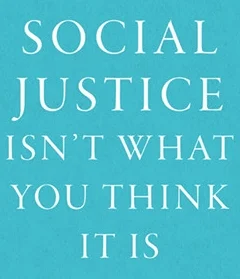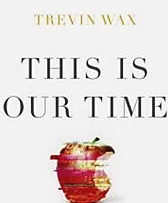What is an Evangelical?
The furor around Hillbilly Elegy has largely died away. Much to nearly everyone’s surprise, a populist won the election. Many of his votes came from people who claim the title evangelical.
The exit poll results that indicate 81% of so-called evangelicals voted for Trump have been used as a cudgel against theologically conservative Protestants, many of whom identify as evangelical.
As Robert Wuthnow notes in his recent book, Inventing American Religion, however, there are significant differences between theological belief and political identity. The pollsters have tried to cross that boundary, but there are indications that the political label evangelical may not provide a strong theological indicator.
In J. D. Vance’s book, Hillbilly Elegy, he demonstrates why using the term "evangelical" as if it means deep conviction and meaningful participation in a certain brand of Protestant religion is faulty:
“Despite its reputation, Appalachia—especially northern Alabama and Georgia to southern Ohio—has far lower church attendance than the Midwest, parts of the Mountain West, and much of the space between Michigan and Montana. Oddly enough, we think we attend church more than we actually do. In a recent Gallup poll, Southerners and Midwesterners reported the highest rates of church attendance in the country. Yet actual church attendance is much lower in the South.
This pattern of deception has to do with the cultural pressure. In southwestern Ohio, where I was born, both the Cincinnati and Dayton metropolitan regions have very low rates of church attendance, about the same as ultra-liberal San Francisco. No one I know in San Francisco would feel ashamed to admit that they don’t go to church. (In fact, some of them might feel ashamed to admit that they do.) Ohio is the polar opposite. Even as a kid, I’d lie when people asked if I attended church regularly. According to Gallup, I wasn’t alone in feeling that pressure. (Hillbilly Elegy, J. D. Vance, 93)”
This is one of the reasons Russell Moore, the president of the Southern Baptist’s Ethics and Religious Liberty Commission, penned his February 2016 Washington Post article arguing this election made him hate the term evangelical.
He notes:
“The word “evangelical” has become almost meaningless this year, and in many ways the word itself is at the moment subverting the gospel of Jesus Christ.
Part of the problem is that more secular people have for a long time misunderstood the meaning of “evangelical,” seeing us almost exclusively in terms of election-year voting blocs or our most buffoonish television personalities. That’s especially true when media don’t distinguish in election exit polls between churchgoers and those who merely self-identify as “born again” or “evangelical.”
Many of those who tell pollsters they are “evangelical” may well be drunk right now, and haven’t been into a church since someone invited them to Vacation Bible School sometime back when Seinfeld was in first-run episodes.”
Despite the consistently demonstrable unreliability of the label as any serious indicator of religious belief, the word continues to be used without definition and qualification. Careful readers and writers should be aware of this.
Much as when using any term, we must be discerning when we interpret information and express it so that we clearly understand or communicate those who we are speaking to.
Those of who are legitimate Gospel Christians should not stop when someone says they belong to a church or regularly attend. We should seek to know their conversion story and if they don’t have one to help them get one.
It may also be time for us to look for another way to describe ourselves. Since evangelical has become associated with political bloc voting, perhaps we need another term.
At the very least, we need to be careful when we communicate to define our terms. We should also be careful not to allow a bare profession of belief made once upon a time to substitute for authentic, action-inspiring faith.





























Reading your Bible is a battle. There’s a reason why Paul lists Scripture as the sword of the Spirit in his discussion of the armor of God (Eph. 6:17). More even than that, Scripture reveals God’s character and is, thus, central to worshiping well (Psalm 119). That’s why reading the Bible is a battle.